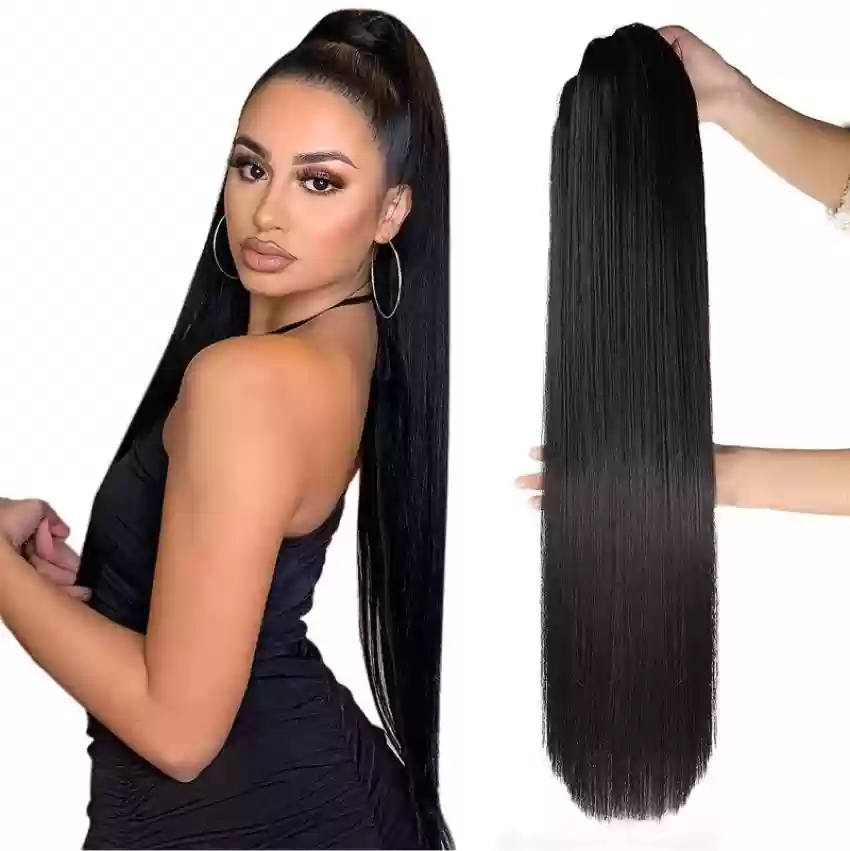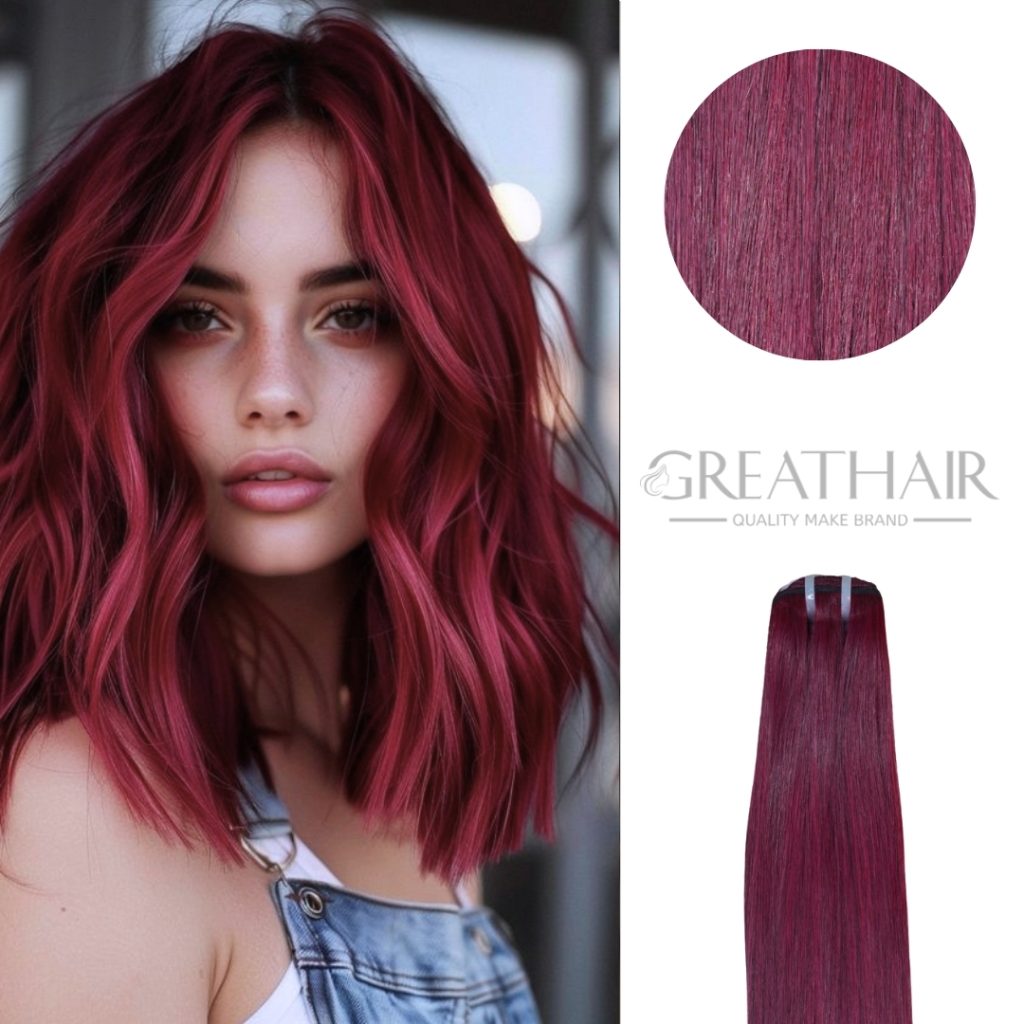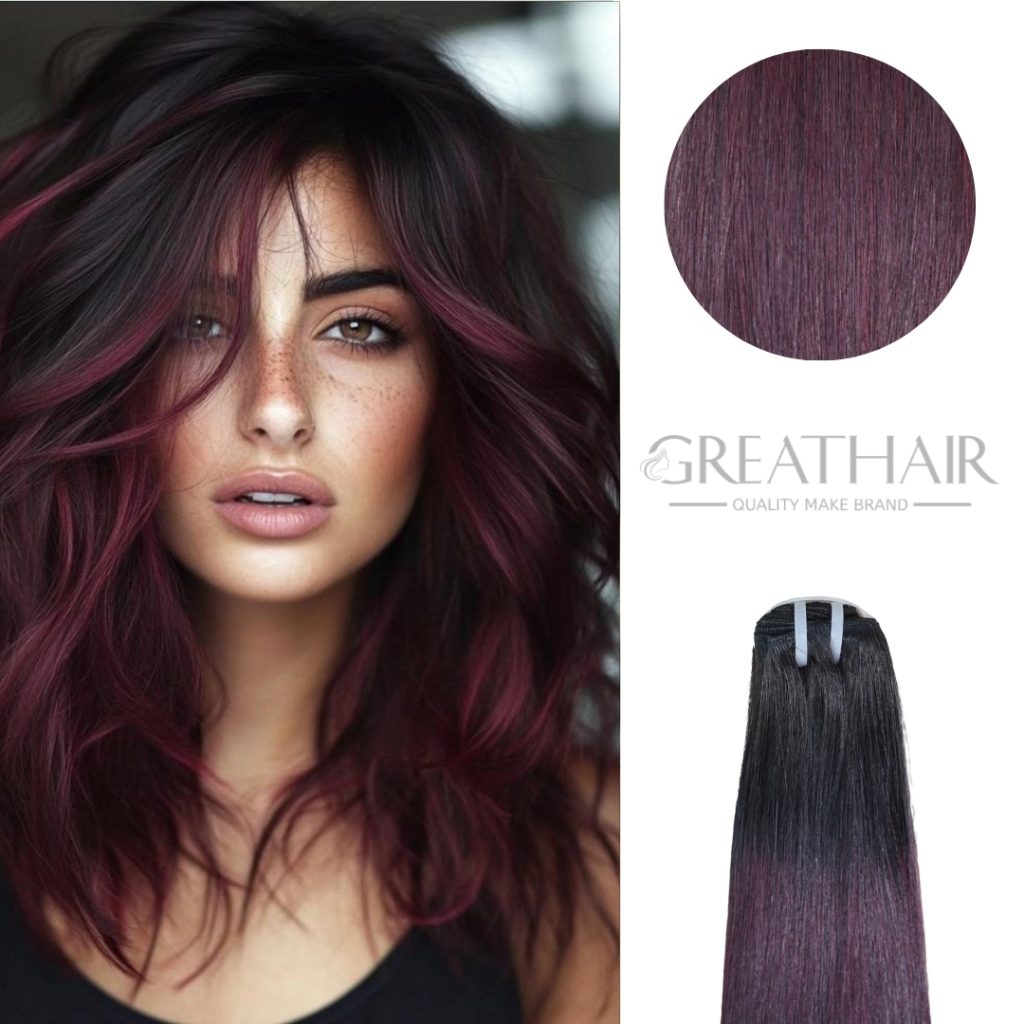
There are no products in the cart
Oct 03, 2025
Post by SEO Greathair
Looking for fuller, longer, healthier-looking hair without the long-term damage? Halo hair extensions have quickly become a favorite for their no-fuss application and minimal stress on natural hair. But one question still comes up again and again: Do halo extensions damage your hair?
In this guide from Great Hair, we’ll explore how halo extension work, how they compare to other types, and what makes them a safe choice, especially for those with fine or fragile strands. Whether you’re new to hair extension or just exploring better options, here’s everything you need to know before you invest.

Do Halo Extensions Damage Your Hair? The Truth You Need To Know
Halo Tail hair extensions are a type of temporary hairpiece designed with both a transparent wire and clips to securely attach the extension to your head. This combination makes them quick to install, comfortable to wear, and suitable for all hair types.
Unlike other hair extensions that bond, tape, sew, or clip directly into your hair, halo extension use a near-invisible wire that sits comfortably around the crown of your head. That means zero glue, zero pressure, and absolutely no pulling at your roots.
This makes a massive difference in long-term hair health. With traditional methods like tape-ins or keratin bonds, there’s constant tension placed on specific sections of your hair, which can lead to breakage or thinning over time. Halos avoid all of that. By resting gently on top of your head, they offer length and volume without interfering with your natural hair growth or damaging delicate strands.
Many stylists agree that for those with fine or breakage-prone hair, halos are one of the most scalp-friendly options available. And based on hair halo extension reviews, they’re among the easiest and safest types to wear every day.
What makes the halo system so effective is how the wire distributes weight evenly across your head. It’s designed to be adjustable and lightweight, so there’s no digging into your scalp or sliding around. Your roots are protected, your part stays undisturbed, and the weft remains hidden even when your hair moves.
When applied correctly, the halo almost feels like it disappears. There’s no pulling, no pressure points, and no strain on your follicles. It’s a design that prioritizes comfort and protection while still delivering dramatic volume and length.
When used correctly, Halo tail extensions will not cause damage to your natural hair. They are one of the safest options for anyone looking to experiment with length, volume, or color without permanent changes.
While halo extensions are one of the safest options out there, they do come with a few limitations.

The Best Choice Vietnamese Hair Extensions
One of the most common reasons people struggle with halo extensions isn’t the extensions themselves, it’s the mismatch between the product and their natural hair.
Extensions that are too thick, heavy, or long for your real hair can put more strain on your roots than necessary. A shade that’s off by just a few tones will be hard to blend, drawing attention to the wire. And a texture that doesn’t match whether too straight or too wavy can make even the best human hair halo extensions look awkward.
Proper placement is key to comfort and appearance. The wire should sit about an inch to two inches from your hairline and tuck just under your occipital bone at the back of your head. Too far forward, and it can slip or create pressure. Too far back, and the weft may sit unevenly or feel too loose.
When placed properly, the wire is completely hidden and the weft hugs your head without movement. But incorrect placement can lead to irritation, poor blending, or even minor breakage if hair gets caught or twisted during wear.
Just like natural hair, extensions need daily care. Failing to brush them before and after use, not washing them regularly, or storing them improperly will shorten their lifespan and affect your hair health too.
Great Hair recommends detangling your halo with a wide-tooth comb, washing it every 8–10 wears with gentle, sulfate-free shampoo, and storing it flat or in a silk-lined box. Avoid using heavy products near the wire and never sleep or exercise with your halo on. These habits will protect both your extensions and your real hair from damage.
For the most natural look, halos often benefit from a little customization. Trimming the ends to match your layers can make the weft blend seamlessly. Styling before wearing, such as curling or straightening the halo on a mannequin head, can also prevent heat exposure to your real hair.
Some users even lightly texturize their halos to mimic their natural volume and movement. This helps avoid a noticeable “step” between your real hair and the extension and gives a more cohesive finish.
Care routines matter. Use hydrating, sulfate-free shampoo and conditioner to wash your halo extensions, avoiding the wire section. Apply leave-in conditioner to the mid-lengths and ends, then gently detangle with a soft brush.
Store your halo in a dry, tangle-free space away from sunlight. A silk pouch or hanger works best. And the most important thing is don’t overwear. Giving your scalp regular breaks helps prevent fatigue and stress on your roots.
These simple adjustments go a long way in extending the life of both your halo and your real hair.
Not all halo extensions are created equal. The best ones are made with 100% Remy human hair where every strand is kept aligned in the same direction, just like natural hair grows. This alignment keeps the cuticle layer intact, which helps prevent tangling, keeps the texture smooth, and allows the hair to move naturally with your own.
On the other hand, synthetic or mixed-fiber extensions may look okay at first, but they often lack the shine, softness, and flexibility of real hair. Over time, they can become stiff, dull, or even frizzy, especially after a few styling sessions.Many low-cost options blend synthetic fibers into the weft, which reduces quality and shortens the lifespan. For natural-looking results and long-lasting wear, Remy human hair is always the safer choice.
Well-made halo extensions are lightweight, flexible, and designed with the shape of the head in mind. Look for models with adjustable wires, reinforced stitching, and weight guides based on hair type. For fine or thin hair, lighter wefts are essential to avoid pressure on fragile roots.
The best halo hair extensions often come from brands that are transparent about construction, weight, and sourcing so you can trust what you’re buying will hold up with regular use.
If they are made of 100% human hair, you can curl, straighten, or style them with heat tools—just like your own hair. For synthetic halo extensions, avoid high heat.
Most people find them lightweight and comfortable. High-quality halo extensions are designed to stay secure without adding too much pressure.
Choose a shade that matches your hair, blend by brushing your natural hair over the extension, and consider trimming or layering them for a seamless look.

The Ultimate Guide To Choosing Weft Hair Extensions
So, do halo extensions damage your hair? When worn and maintained correctly, the answer is no. In fact, they’re one of the safest, most versatile ways to enhance your hairstyle without harming your natural strands. The key is choosing high-quality, human hair halo extension, following proper care routines, and making sure the fit and style are right for your hair type. Still not sure if halos are right for you? Explore Great Hair’s collection of the best human hair halo extensions, or reach out to our experts for a personalized recommendation.
Ready to give your hair a boost without the damage? Discover your perfect halo extension at Great Hair today.
At Great hair, Halo Tail extensions are highly popular in European and American markets.
Whether you want highlight effects, longer hair, or added volume, Halo Tail hair extensions are a safe, stylish, and practical choice for both salons and individual customers.
We Will Contact You Shortly